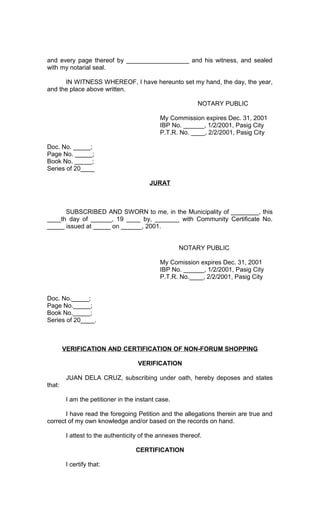In the Philippines, the Chairman and the Corporate Secretary typically sign the board resolution to make it official and legally binding.

Board Members Involved
In the context of signing board resolutions in the Philippines, several key players within the Board of Directors have unique roles and responsibilities. Understanding these roles is crucial for ensuring that the signing process adheres to both internal protocols and external regulations.
Role of the Chairman
The Chairman acts as the leader of the board and usually sets the agenda for board meetings, including discussions on resolutions that require formal approval. In most cases, the Chairman signs the board resolution, symbolizing that the board has reached a collective decision.
- Duties During the Meeting
- Facilitate discussions on the resolution
- Ensure that all directors have adequate information to make a decision
- Duties Post-Meeting
- Sign the board resolution
- Make certain the resolution gets filed and documented properly
Role of the Secretary
The Board Secretary plays a vital role in the preparation and documentation of board resolutions. Their responsibilities are largely administrative but are critical for the proper governance of the company.
- Duties Before the Meeting
- Draft the initial resolution for board review
- Send out meeting invites along with the agenda
- Duties During the Meeting
- Record minutes of the meeting
- Collect signatures from authorized board members
- Duties Post-Meeting
- Finalize the resolution document
- Archive the signed resolution for future reference
Role of Individual Directors
Each director on the board has a fiduciary duty to act in the best interests of the company and its shareholders. They participate in the discussion and approval of board resolutions.
- Duties Before the Meeting
- Review the draft resolution
- Prepare any questions or points for discussion
- Duties During the Meeting
- Engage in constructive debate
- Vote on the resolution
- Duties Post-Meeting
- Ensure compliance with the agreed resolution
- Monitor the implementation of the resolution
Procedure for Signing Board Resolutions
Understanding the correct procedure for drafting, approving, and signing board resolutions is crucial for effective corporate governance. In the Philippines, these steps are often guided by the Corporation Code, as well as company bylaws and internal guidelines. Below is a breakdown of the procedure.
Drafting the Resolution
The initial drafting of a board resolution is generally the responsibility of the Board Secretary, or sometimes, the legal team. They will create the resolution based on the needs of the company and the items on the board’s agenda.
- Key Components to Include
- Title of the resolution
- Recitals explaining the rationale
- The resolved clauses stating the actual decisions or actions
- Review and Edit
- Directors receive the draft for review
- Any amendments are discussed and agreed upon
Board Meeting or Written Consent
Resolutions can be approved either in a board meeting or via written consent, depending on what the company’s bylaws permit.
- Board Meeting
- The Chairman convenes the meeting
- Directors discuss and debate the resolution
- A vote takes place
- Written Consent
- Circulate the draft resolution to all directors
- Each director signs their consent
Approval and Signing Process
Once the board agrees on the resolution, it needs formal approval and signatures.
- Quorum Requirements
- A minimum number of directors should be present or should have provided written consent
- Voting and Approval
- Directors vote on the resolution
- Count votes to determine if the resolution passes
- Signature Collection
- The Chairman and Secretary usually sign the document
- Additional signatures may be required depending on the resolution’s nature

Types of Board Resolutions
Board resolutions are not all created equal. Different types serve different purposes and may have different voting requirements and legal implications. In the context of corporate governance in the Philippines, the commonly seen types of board resolutions are Ordinary, Special, and Unanimous Resolutions. Here are the details:
Ordinary Resolutions
An Ordinary Resolution is the most common type and generally involves routine business decisions.
- Key Features
- Requires a simple majority to pass
- Often concerns day-to-day operational matters
- Examples
- Approving quarterly budgets
- Hiring or firing of an executive
Special Resolutions
Special Resolutions are more serious in nature and usually require a higher level of agreement among board members.
- Key Features
- Requires at least two-thirds majority, or as stipulated in the company bylaws
- Involves significant changes like amending bylaws or merging with another company
- Examples
- Changing the company name
- Sale of major assets
Unanimous Resolutions
As the name suggests, Unanimous Resolutions require the agreement of all directors present at the meeting, without any abstentions.
- Key Features
- Requires 100% agreement from all present board members
- Usually needed for the most critical company decisions
- Examples
- Dissolution of the company
- Adoption of a new business model
Documentation and Record-Keeping
Maintaining proper documentation and records is a fundamental aspect of corporate governance. This is especially true when it comes to board resolutions, as these documents are legally binding and may be subject to review by auditors, regulatory bodies, or in legal proceedings. Here’s how companies typically manage this critical function:
Required Documents
Having the right documents on hand is crucial for both legal compliance and effective operation.
- Board Resolution Document
- The actual signed resolution, complete with details like date, board members present, and the resolutions passed
- Meeting Minutes
- Summary of what was discussed, points raised, and decisions made during the board meeting
- Voting Records
- A detailed account of how each board member voted on the resolution
- Supporting Documents
- Any research, financial reports, or other documents cited in the resolution

Archiving and Accessibility
Storing these documents securely yet accessibly is equally important.
- Physical Storage
- Many companies keep hard copies in secure file cabinets
- Usually stored in the company’s main office or a secure offsite location
- Digital Storage
- Increasingly, companies are opting for digital archiving for easier access and searchability
- Access Control
- Not everyone should have access to these sensitive documents
- Generally, only board members and certain key executives can access these archives
- Document Retention
- Know how long to keep records (often several years, depending on local laws and regulations)
Common Issues and Pitfalls
Even with the best intentions, companies can sometimes encounter issues and pitfalls when dealing with board resolutions. Here are some common problems to watch out for and how to mitigate them.
Incomplete Information
Having incomplete or incorrect information can severely compromise the validity of a board resolution.
- Symptoms
- Omitted details about the meeting or participants
- Lack of rationale or supporting evidence for the resolution
- Mitigation Strategies
- Always double-check the resolution document for completeness
- Involve legal advisors to review the resolution’s contents
Failure to Comply with Legal Requirements
Legal requirements for board resolutions can vary depending on jurisdiction, type of company, and other variables.
- Symptoms
- Incorrect voting process
- Inadequate quorum
- Failure to notify board members about the meeting in accordance with legal requirements
- Mitigation Strategies
- Refer to the company bylaws and the Corporation Code for guidance
- Consult legal advisors for specific advice on compliance
Consequences of Non-Compliance
Failing to adhere to the rules can result in severe consequences for the company and its board members.
- Immediate Consequences
- Legal penalties
- Loss of shareholders’ trust
- Long-term Consequences
- Damage to company reputation
- Potential legal battles that consume time and resources